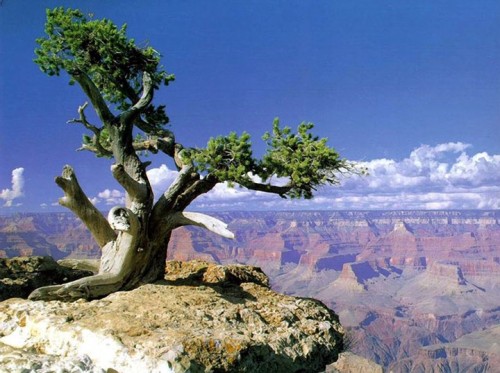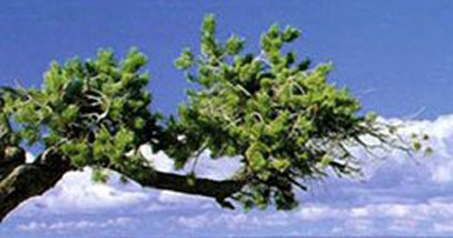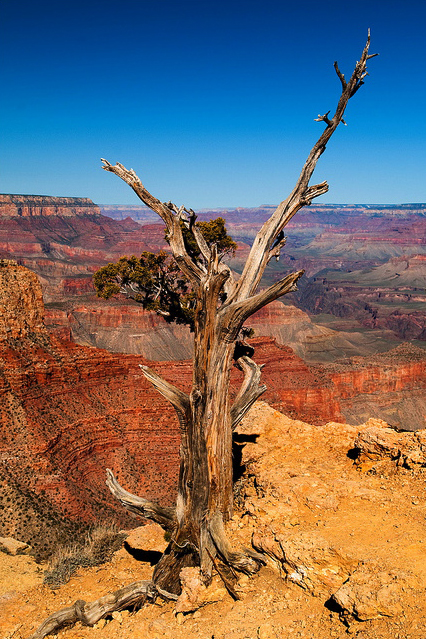
Perfect, powerful, beautifully nicely photographed and apparently growing on a rock. The shape of the tree and the deadwood have a juniper look, but the foliage looks more pine than juniper, though it’s too far away to get a good read (see below). The dramatic backdrop could only be the Grand Canyon. The photo is courtesy of Bonsai Mania.
What would you do?
Imagine that this tree is in a training pot and, best of all, it’s yours. What would you do (if anything) to improve it?

This blurry blow up pretty much confirms my notion the the tree is a pine, perhaps even a Bristlecone. To be sure, I got my trusty National Wildlife Federation Field Guide to Trees of North America out, and sure enough, the Intermountain Bristlecone (Pines longaeva) has a spot on the map that falls right on the Grand Canyon.

This one looks like a Juniper with the foliage in full winter color. Both Rocky Mountain junipers (J. scopularum) and Utah junipers (J. osteosperma) are found around the Grand Canyon and your guess is as good as mine. The shot was borrowed from Flickr.
After I was completely sure that the tree was in good health after its recovery period from transplanting I would get out the branch benders some rafia and a handful of wire. As impressive as Mother Nature’s work has been on this tree I feel the branch placement could be altered as well as some foliage refinement.
Thanks Steve,
Agreed. Some refinement is in order. How much depends on your view. Dan Robinson’s bonsai provide excellent examples of a sophisticated minimalist approach. Thye can be found in Gnarly Branches, Ancient Trees by Will Hiltz. Walter Pall is another one that often thinks less more. The opposite approach, radical transformations, can be found in numerous places, especially with Kimura and many other Japanese bonsai artists. Not that they don’t try to save the natural character of any collected tree, just that they seem to enjoy high levels of refinement.